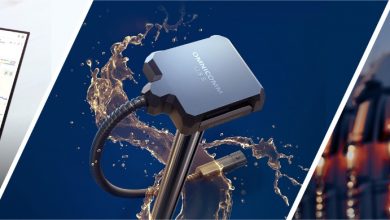The Floow explains the status of Insurance Telematics in UK
“We believe that each of the methods of collecting data has its own place in the market and have designed our systems to accept data from fitted boxes, OBD devices or smartphones and provide a simple scoring mechanism back to both insurers and the customer. “
– Andy Goldby, Chief Product Officer, The Floow
One of the buzzwords that has been floating around UK motor insurance for a while now is Telematics, but is now the time for it to come of age?
The story goes back to the mid-90’s when a few insurers notably Norwich Union (now Aviva) and Direct Line carried out small scale pilots giving some customers the chance to prove that they were low risk (and should therefore be quoted low premiums) by having their driving monitored by a ‘black-box’ that was fitted to their vehicle and transmitted data on their driving behaviour back to the insurer.
Traditionally insurers had rated on various factors about the individual (their age, gender etc), where they lived, their vehicle and past claims history but a few crucial pieces of information were missing – most notably where, when and how did they actually drive. Everyone intuitively knew that these were important factors but until technology costs fell sufficiently the proxies of age, gender, experience, NCD, postcode etc were deemed to be sufficiently good to calculate a price for the individual.
By the early 2000’s the costs of a black box were down to around £200 (plus fitting) which meant that for otherwise high risk (and therefore high premium) business, e.g. young drivers, it became worth offering to fit a box in their car (for free) in order to try to differentiate between the better and worse drivers in this segment. However, there was a problem in the otherwise cunning plan. At this time the public were not used to sharing their information and the thought of your every move being watched by the insurance big brother was scary at best and a non-starter at worst so the take up from policyholders was low and although some learnings were made both pilots were closed down with the excuse that the public was not ready for such a proposition.
Moving forward ten years or so and the situation has changed dramatically;
- Many people now happily share pretty much every detail of their lives on Facebook or other social media;
- The Gender Directive in Europe has removed what was a significant differentiating rating factor (especially at young ages);
- The spiraling whiplash epidemic has sent motor insurance premiums increasing by double digits each year;
- Technology costs have drastically reduced making the expense of running the proposition more viable.
As a result many insurers are now either trialing or using telematics with their policy-holders and around 1% of the UK motor market is now sold using this type of technology.
So what is Telematics?
There are many variants but in all of them you have a device in your vehicle which records information about how, where and when you drive via a GPS receiver and in some cases an accelerometer as well. This data can now be collected from:-
- A ‘black-box’ wired to the car’s electronics and hidden somewhere in the vehicle
- A ‘self-installed device’ which is generally plugged into the vehicle’s On-Board Diagnostic port
- A smartphone
There are, of course, pros and cons for each of the three device types.
A black-box is expensive to buy and has to be fitted by a professional installer but once fitted it can be used for stolen vehicle recovery as well as telematics insurance and there is little chance of fraud as it is nearly impossible for the customer to turn it off if they are in a hurry.
Smartphones are all pervasive now so customers are used to the technology and sharing data via this medium and they are transportable so they deal with multi-vehicle policies well. However, there are issues around the quality of the accelerometer for crash reconstruction and you cannot be certain whether the customer is the driver or whether they are even in their vehicle.
OBD devices sit somewhere in the middle, they are easy for the customer to fit (if they can find their OBD port) but as a result are also easy to unplug and so suffer from potential fraud issues. The costs also vary wildly and with around 70% of the insurance market paying under £600 for their policies the insurer is not keen to spend more than an additional £50 per policy to gain any telematics benefit.
Whatever device is used though the data from the GPS and accelerometer are then analyzed and key attributes are derived such as:
- Location
- Speed
- Distance travelled
- Length of time driven for
- Time of day journey took place
- Accelerations (& decelerations) both longitudinally and laterally
- Harsh acceleration, braking or swerving events
- Crashes
This data can then be used to inform the price of the policy as well as give timely and accurate information when an accident does occur which can help the insurer to record quality first notification of loss information and understand liability as well as challenge potentially fraudulent claims.There are then 3 main ways in which the policy can be constructed:
Pay As You Drive
This is, in effect, a limited mileage policy. The rating factors and basic price can be pretty much as per a normal motor policy with the exception that you can set a low mileage limit. The important thing is, of course, that now you can monitor the actual mileage driven and as a result you can be confident on the initial discount and can then request additional payments per 100 miles once the limit is breached.
Pay When/Where You Drive
There is a general understanding that driving in the dark is more dangerous than during the day, especially for younger drivers, but a standard motor policy cannot understand the exposure over these time periods and also cannot charge for them differently. However, with a telematics product you can know exactly when the driving is taking place and so can charge for a different level of risk (by basing each months premium on last month’s driving, giving a refund at the end of the month or by imposing a levy each time the customer drives at the wrong time). A similar method can be used to allow for where the customer drives. On a standard policy the home postcode is the only proxy you have but with a telematics product you know exactly where the driving is taking place so can offer a discount for driving through good areas or driving on safe roads (e.g. motorways).
Pay How You Drive
This is rapidly becoming the most common method of charging and it uses knowledge of the driving style to build an understanding of the likelihood of the driver being involved in an accident which enables to be used this as an additional rating factor in the pricing algorithm once you have built up some data on the driver.
From The Floow’s perspective
It is this final approach that we recommend at The Floow. Having worked closely with leading academics in the UK and across the world we have built algorithms based on the accelerations, speed, level of distraction and others which influence the probability of having an accident and the severity of impact if one does occur.
We believe that each of the methods of collecting data has its own place in the market and have designed our systems to accept data from fitted boxes, OBD devices or smartphones and provide a simple scoring mechanism back to both insurers and the customer.
The challenge now for the insurer is to make it work.
About the author
Andy Goldby, FIA, Chief Product Officer | The Floow
A Fellow of the Institute of Actuaries (F.I.A) and a renowned General Insurance industry executive, he is handling a long roster of clients that includes insurers and fleet managers at large. In his various capacities, he has managed teams of statisticians, actuaries and underwriters. He is also the recipient of Brian Hey prize for a Giro paper on the Winner’s Curse.
[whohit]The Floow explains the status of Insurance Telematics in UK[/whohit]



